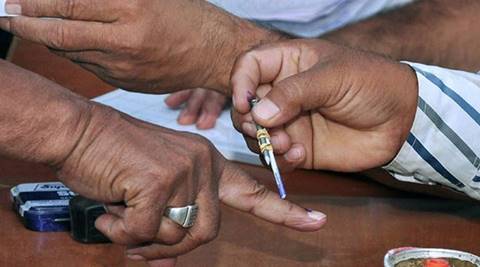
As voters in Punjab and Goa cast their vote today, larger curiosities are in the fray. Will outcomes in the two states reflect a verdict on the BJP-led Centre’s bold nation-wide move of demonetisation? Will they confirm or reverse the Congress’s losing streak in elections across the country? The Punjab and Goa verdicts will also be read closely for what they augur for the parliamentary battle in 2019. Apart from those questions, these elections are more riveting because they carry a greater element of uncertainty. In Punjab, a traditional bi-polar contest has become triangular for the first time because of the entry of the Aam Aadmi Party. And in Goa, the AAP and an alliance between the Maharashtra Gomantak Party, Shiv Sena and a rebel RSS faction have unsettled the complacencies and calculations of the main players.
Regardless of who wins on March 11, the jolt to the established parties in these elections — the SAD-BJP and Congress in Punjab and the BJP and Congress in Goa — is entirely welcome. It is a warning against taking the voter for granted. In Punjab, where the triangulation of the contest has seemed more dramatic in this campaign, the entry of the third player has made the SAD and the Congress take stock of their own tactics and strategies, and also, arguably, their political reflexes and silences on the main issues of drugs, corruption, dwindling growth and rising unemployment. It has also interrogated, to an extent, the closing of spaces within both established players to new entrants, ideas and aspirations — not just because of the stranglehold of dynasty but, more fundamentally, because of the receding of political vitality and responsiveness. The entry of AAP, which had earlier carved inroads in the state by wresting four Lok Sabha seats in the face of a Modi wave in 2014, widens the contest in yet another significant way: Arvind Kejriwal’s party lacks a conventional “Punjabi” face and while that seemed to make it vulnerable to opponents’ allegation of being an “outsider” in Punjab, it also affirmed the potential and possibilities of political portability and the unimportance of borders in a diverse and layered polity.
But while the addition of third and fourth corners has made the contest more exciting and less smug in Punjab and Goa, it is not clear whether the new player will only end up disturbing the poll math or reshape the contest in more enduring ways. In other words, will the AAP’s challenge reorder the political emphases and redraw the priorities for all players in Punjab? Regardless of who wins and who loses, that is the question in the state.